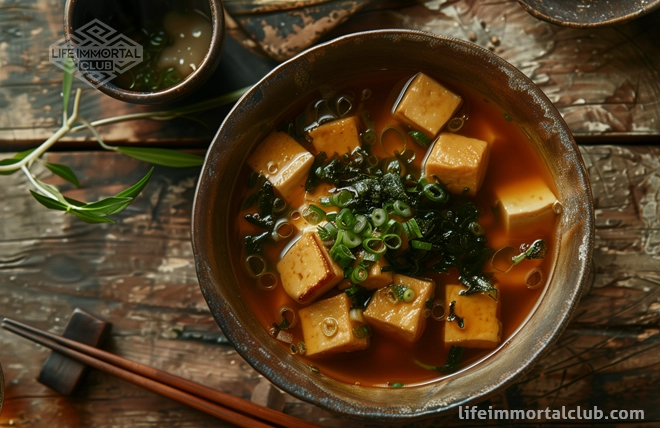The secrets of living a centenarian life through proper nutrition

Introduction
The pursuit of a longer and healthier life has been a timeless goal for humanity. While achieving longevity is undeniably multifaceted, the pivotal role of nutrition in this pursuit cannot be underestimated. But what if we could actually start to take control of our overall longevity and lifespan capabilities by making small key changes and improvments to our diet?
Nutrition serves as the bedrock of our well-being, shaping our vitality and enhancing our prospects of celebrating the incredible milestone of a century on this planet. In this article, we will dive into the intricate connection between our dietary choices and longevity. We will explore the diverse dietary patterns embraced by centenarians across the globe, unveiling the mysteries behind their remarkable and enduring lives.
Table of Contents
- Importance of Nutrition in Longevity
- Exploring the Concept of Centenarians
- Setting the Goal of Living 100 Years through Proper Diet
- The Blue Zones: Learning from Centenarian Communities
- Introduction to Blue Zones and their significance
- Examining the dietary patterns of centenarians in different regions
- Okinawa, Japan: Emphasis on plant-based diet and low-calorie intake
- Sardinia, Italy: Mediterranean diet rich in vegetables, legumes, and olive oil
- Nicoya Peninsula, Costa Rica: Traditional Central American cuisine with fresh fruits and beans
- Ikaria, Greece: Mediterranean diet with an abundance of herbs and local produce
- Key Nutrients for Longevity
- Plant-Based Diet vs Animal
Importance of Nutrition in Longevity
Nutrition serves as an essential building block for physical well-being and contributes substantially to our overall health and longevity. The food we consume provides us with the necessary energy, macronutrients (such as carbohydrates, proteins, and fats), vitamins, minerals, and phytochemicals that support optimal bodily functions. A well-balanced diet not only bolsters our immune system but also helps regulate metabolism, reduces susceptibility to chronic diseases like heart disease and diabetes, enhances mental acuity, promotes healthy aging processes such as cellular repair and regeneration - all vital components in achieving an extended lifespan.
Exploring the Concept of Centenarians
Centenarians are individuals who have reached or surpassed 100 years of age – a remarkable accomplishment that has long fascinated researchers seeking to unravel their secrets to longevity. These extraordinary individuals serve as living testaments to the potential benefits derived from leading healthy lifestyles combined with genetic predisposition. By studying centenarians from various regions around the world whose populations exhibit higher-than-average numbers of these long-livers – known as Blue Zones – we can gain valuable insights into their lifestyles and dietary habits that may contribute to their prolonged existence.
Setting the Goal of Living 100 Years through Proper Diet
As humans strive to extend their lifespans, it becomes crucial to set the goal of reaching the extraordinary milestone of living 100 years. While genetics certainly play a role in determining our potential lifespan, lifestyle choices, particularly those related to diet, offer an opportunity to positively influence longevity.
By adopting a proactive approach towards nutrition and making informed decisions about the foods we consume, we can pave the way for a healthier and longer life. In the following sections of this article, we will delve into specific dietary patterns followed by centenarians worldwide and explore the key nutrients that contribute to their overall well-being and extended lifespans.
Understanding the profound impact that nutrition has on our longevity is essential in our quest to live 100 years or more. By exploring the lifestyle choices and dietary habits of centenarians from various regions worldwide, we can gain valuable insights into how diet influences lifespan.
In subsequent sections of this article, we will examine specific dietary patterns followed by these remarkable individuals and delve deeper into essential nutrients that contribute significantly to their overall health and well-being. Armed with this knowledge, we can embark on a journey towards adopting a diet that supports vitality and promotes longevity in our own lives.
The Blue Zones: Learning from Centenarian Communities
Introduction to Blue Zones and their significance
In our quest for longevity, understanding the lifestyles of those who have already achieved remarkable longevity becomes paramount. Blue Zones, a term coined by National Geographic explorer Dan Buettner, refer to regions around the world where an unusually high number of people live past the age of 100.
These zones are not only intriguing but hold valuable insights into the factors contributing to extended lifespans. By studying the inhabitants' diets, among other aspects of their lives, we can gather significant knowledge on what it takes to live well into our golden years.
Examining the dietary patterns of centenarians in different regions
Within these Blue Zones, specific dietary patterns emerge, showcasing a diversity that shares commonalities in promoting longevity. Let's explore some notable examples:
Okinawa, Japan: Emphasis on plant-based diet and low-calorie intake
The Okinawan region in Japan boasts one of the highest populations of centenarians worldwide. Their diet focuses predominantly on plant-based foods such as sweet potatoes, legumes, whole grains, and an abundance of vegetables and fruits. A distinctive feature is their practice of "Hara Hachi Bu," which translates to eating until you are 80% full—a reminder to achieve satiety without overindulging.
Sardinia, Italy: Mediterranean diet rich in vegetables, legumes, and olive oil
Sardinia stands out as another region with an exceptional number of individuals living well beyond 100 years old. Here they follow a traditional Mediterranean diet abundant in fresh vegetables like tomatoes and leafy greens along with legumes such as chickpeas and lentils.
Olive oil takes center stage as their primary source of fat while lean meats like lamb and fish are consumed in moderation. This dietary approach, coupled with an active lifestyle, reflects the essence of the Mediterranean way of living,
Nicoya Peninsula, Costa Rica: Traditional Central American cuisine with fresh fruits and beans
On the Nicoya Peninsula in Costa Rica, a simple yet nourishing diet prevails among centenarians. Their traditional cuisine revolves around fresh fruits like papaya, pineapple, and mangoes, along with staples like rice and black beans.
These locally sourced ingredients provide a nutrient-rich foundation while being low in saturated fats. Additionally, the consumption of corn tortillas and yams adds diversity to their carbohydrate intake.
Ikaria, Greece: Mediterranean diet with an abundance of herbs and local produce
Ikaria, known as "The Island Where People Forget to Die," is home to a population renowned for their longevity. Much like Sardinia's Mediterranean diet model mentioned earlier, the Ikarians prioritize whole foods such as fresh vegetables (e.g., tomatoes, greens) grown locally along with legumes like lentils and chickpeas. What sets them apart is their use of unique herbs such as rosemary and sage—an integral part of their traditional cuisine believed to have beneficial effects on health.
These examples from Blue Zones offer us valuable insights into diverse dietary patterns that contribute to longevity. While each region has its nuances when it comes to food choices and cultural practices surrounding meals, there are overarching themes promoting plant-centric diets rich in whole foods that we can incorporate into our own lives for optimal health and extended vitality.
Key Nutrients for Longevity
Antioxidants: Protecting against oxidative stress and cellular damage
Antioxidants play a crucial role in maintaining our health and promoting longevity. These powerful compounds help protect our bodies against oxidative stress, a process that leads to cellular damage and contributes to chronic diseases such as heart disease, cancer, and neurodegenerative disorders.
Consuming foods rich in antioxidants is essential for maintaining optimal health and extending our lifespan. Some excellent sources of antioxidants include berries like blueberries, raspberries, and strawberries.
These vibrant fruits are packed with anthocyanins, a type of antioxidant that gives them their deep colors. Dark chocolate is another delightful source of antioxidants, specifically flavonoids.
Opt for dark chocolate with a high percentage of cocoa content to reap the maximum benefits. Green tea is a popular beverage known for its antioxidant properties.
It contains catechins, which are potent antioxidants that can help reduce the risk of various chronic diseases. By incorporating these antioxidant-rich foods into your diet regularly, you can increase your body's defense against harmful free radicals and potentially slow down the aging process.
Omega-3 Fatty Acids: Promoting heart health and reducing inflammation
Omega-3 fatty acids have gained significant recognition for their numerous health benefits, particularly in promoting heart health and reducing inflammation throughout the body. These essential fats are found primarily in fatty fish like salmon, mackerel, and sardines.
Including these fish varieties in your diet can provide you with an abundant source of omega-3s. For those following a plant-based diet or who do not consume fish regularly, flaxseeds are an excellent alternative rich in omega-3 fatty acids.
These small seeds contain alpha-linolenic acid (ALA), which can be converted by the body into other forms of omega-3s such as eicosapentaenoic acid (EPA) and docosahexaenoic acid (DHA). These fatty acids are crucial for brain health and cognitive function, making them an essential addition to a longevity-promoting diet.
Vitamins and Minerals
A well-rounded intake of vitamins and minerals is vital for maintaining optimal health and ensuring longevity. Three key nutrients often associated with various aspects of our well-being are vitamin D, calcium, and iron.
Vitamin D is crucial for bone health, as it aids in the absorption of calcium. While sunlight exposure remains the best source of vitamin D, fortified foods such as milk, orange juice, and cereals can help supplement your intake.
Additionally, consuming fatty fish like salmon or mackerel provides a natural source of vitamin D. Calcium is essential for maintaining strong and healthy bones.
Dairy products such as milk, yogurt, and cheese are excellent sources of calcium. For those who follow a plant-based diet or have lactose intolerance, leafy green vegetables like kale, broccoli, and bok choy also provide significant amounts of this mineral.
Iron is necessary for the production of healthy red blood cells that transport oxygen throughout the body. Lean meats like chicken or turkey are rich in heme iron—a form easily absorbed by our bodies.
Plant-based sources include legumes such as lentils or chickpeas which provide non-heme iron that can be enhanced by consuming them with vitamin C-rich foods like citrus fruits or bell peppers. By incorporating these vitamins and minerals into your diet through a variety of nutrient-dense foods, you can support overall health while potentially increasing your chances of reaching the remarkable milestone of living to 100 years old.
Plant-Based Diet vs Animal
The Benefits of a Plant-Based Diet
A plant-based diet, rich in fruits, vegetables, whole grains, legumes, and nuts, has gained significant attention for its potential to promote longevity. Not only does it provide essential vitamins and minerals, but it also offers numerous health benefits. Plant-based diets are naturally low in saturated fats and cholesterol while being high in fiber and antioxidants.
The abundance of fiber helps regulate blood sugar levels and maintain a healthy weight. Additionally, the antioxidants found in plant foods help combat inflammation and protect against chronic diseases such as heart disease and certain types of cancer.
Incorporating a variety of colorful fruits and vegetables into your daily meals ensures an adequate intake of essential nutrients such as vitamin C, vitamin A (beta-carotene), potassium, and folate. These nutrients play crucial roles in supporting a robust immune system, healthy vision, proper cell functioning, and overall vitality.
Furthermore, plant-based diets tend to be naturally lower in calories compared to animal-based diets since they are often less energy-dense. This can be beneficial for weight management purposes as excess weight is associated with an increased risk of various diseases.
The Role of Animal Products
While plant-based diets offer numerous health advantages when it comes to longevity, some animal products can still play a role in a balanced diet if consumed mindfully. Lean sources of protein like fish or poultry provide essential amino acids necessary for building muscle tissue while being relatively lower in saturated fats compared to red meats or processed meat products.
Fish containing omega-3 fatty acids such as salmon or sardines have been associated with improved heart health and reduced inflammation. It is important to note that the quality of animal products matters greatly.
Opting for organic or grass-fed options whenever possible can minimize exposure to harmful additives like antibiotics or hormones while ensuring higher nutrient profiles. Additionally, moderating portion sizes and balancing animal protein intake with an abundance of plant-based foods can help maintain a healthy dietary equilibrium.
Bonus Content: Popular and Trending Diets for Longevity in 2023
The most popular and trending diets for longevity in 2023 emphasize a range of healthy eating patterns. Here's a summary of the key diets:
- Longevity Diet: Focuses on legumes, whole grains, and vegetables, moderate fish consumption, minimal white meat, and excludes red meat and processed meat. Transitioning to this diet could add 8 to 8.8 years to life expectancy.
- High-Protein and Mindful Eating: In the USA, these were the most common eating patterns, with 18% and 17% of survey respondents following these diets, respectively. Other popular patterns include calorie-counting and plant-based diets.
- Mediterranean Diet: Ranked as the best diet overall for six consecutive years, it includes moderate amounts of fish, dairy, eggs, and poultry, and limits red meat, refined sugars, and processed foods. It focuses on healthy fats without being as restrictive as ketogenic diets.
These diets share a focus on plant-based foods, moderate animal protein, and reduced processed foods and sugars, aligning with trends towards healthier eating for longevity.
Conclusion
Embracing a diet rich in plant-based foods while incorporating high-quality animal products in moderation can provide a solid foundation for promoting longevity and overall well-being. The Blue Zones reveal that centenarian communities have thrived on diverse diets, emphasizing plant-centric meals while embracing cultural traditions.
By prioritizing the consumption of antioxidant-rich fruits and vegetables, omega-3 fatty acids from sources like fish or flaxseeds, and essential vitamins and minerals, we can nourish our bodies to support optimal health as we strive to live 100 years. Remember, no single diet guarantees longevity; it is the overall dietary pattern that matters most.
Choosing whole foods over processed options, maintaining a balanced intake of nutrients, staying physically active, managing stress levels, and nurturing social connections all contribute to a holistic approach towards living healthier lives. Embrace the power of nutrition as part of your journey towards vitality and longevity – with proper care for what we put on our plates today; we pave the way for an inspiring tomorrow full of possibilities.







